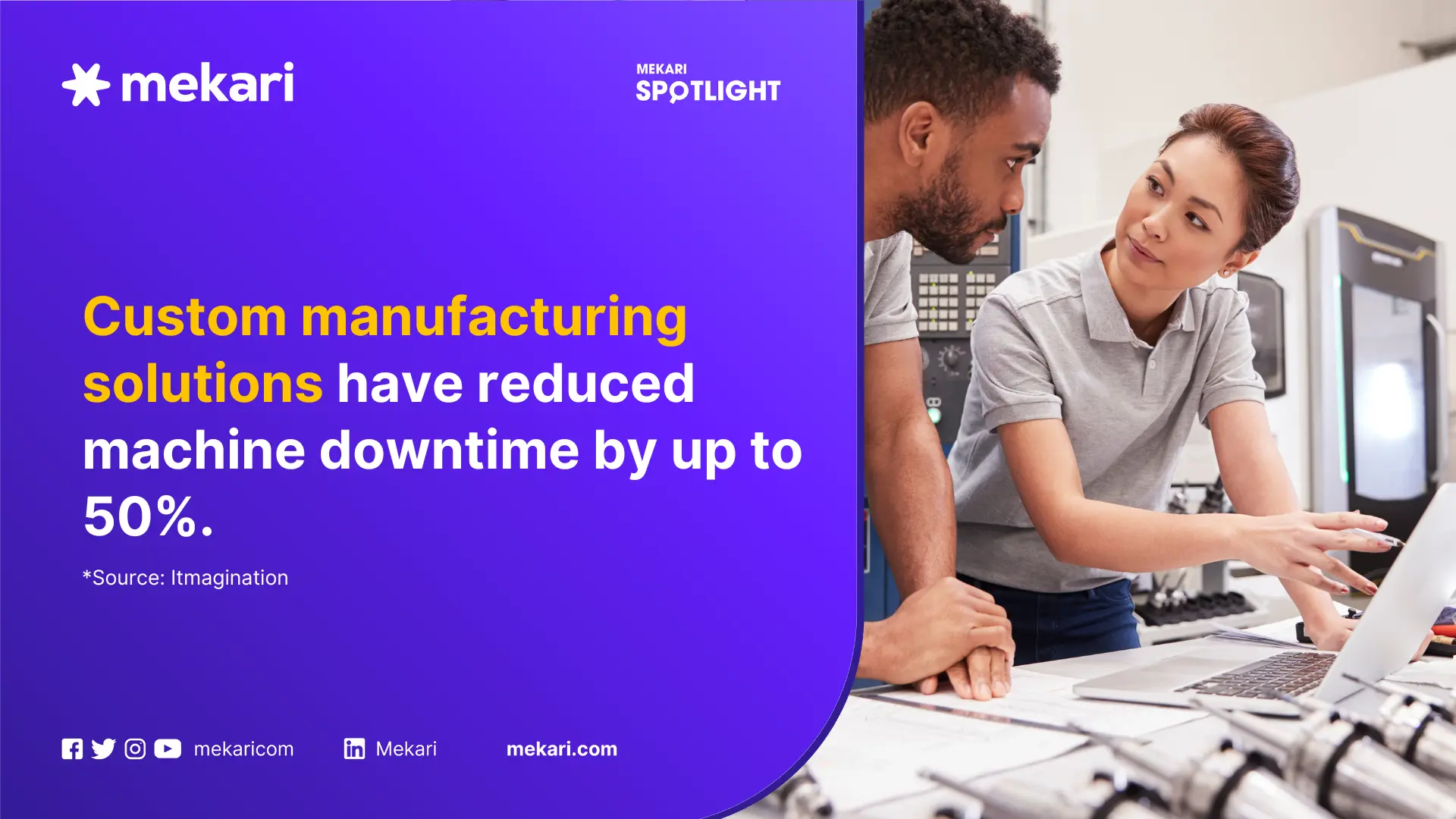Highlight
- Transitioning to a paperless office isn’t just about cutting costs—it also improves operational efficiency and contributes to sustainability.
- Converting paper documents to digital format is often the main challenge, but leveraging mobile apps and scanning tools makes the process seamless.
- To ensure smooth integration of the paperless workflow, you must establish clear policies, choose reliable cloud-based storage solutions, and ensure your team is trained on the new system.
The average office worker uses 10,000 sheets of paper per year. As organizations race toward digital transformation, one stubborn challenge remains: transforming mountains of paper documents into streamlined digital files.
While the benefits of going paperless are clear – from instant document retrieval to significant cost savings – many companies find themselves stuck between paper-based inefficiency and digital excellence.
The breakthrough? Cloud-based solutions have revolutionized this transition, offering seamless methods to digitize, store, and manage documents through mobile platforms. This article will provide practical tips on how to go paperless at work and reap the benefits of a digital transformation.
Why your business needs to go paperless
Not going paperless can hinder a business in several significant ways:
1. Higher operational costs
U.S. businesses spend a staggering $35 billion annually on filing, storing, and retrieving paper documents.
For small businesses watching their budget, these hidden costs silently eat away at profitability through printing supplies, storage space, and manual filing systems.
2. Reduced efficiency and productivity
Consider this: your employees spend 2 hours each day searching through papers and files – that’s 25% of their workday lost to inefficient document management.
This dramatic productivity drain impacts not just daily operations, but your organization’s ability to make timely decisions.
3. Security risks
The statistics are sobering: 70% of businesses would fail within three weeks if their paper records were destroyed by fire or flood. Digital backup systems aren’t just a convenience – they’re essential for business continuity and survival.
4. Environmental impact
Organizations generate 85 million tons of paper waste annually, contributing significantly to deforestation and water consumption.
As consumers increasingly prioritize environmental responsibility, maintaining paper-heavy processes affects both the planet and your brand reputation.
5. Limited accessibility and collaboration
With hybrid work becoming the norm, paper-based systems create unnecessary barriers. While digital documents enable instant sharing and real-time collaboration, paper files remain stuck in physical offices, limiting team productivity and responsiveness.
6. Scaling limitations
Business growth inevitably means more documentation. Paper-based systems create bottlenecks that become more pronounced as your organization expands, requiring additional storage space, filing systems, and staff time for document management.
Benefits of going paperless
Wondering how to go paperless at work? Embracing a paperless office offers a multitude of advantages for businesses of all sizes.
1. Cost reduction and financial benefits
Going paperless delivers significant financial benefits that directly impact your bottom line. The most immediate saving comes from eliminating the need to purchase paper, ink, and printing supplies.
But the savings go much deeper – businesses no longer need to pay for physical storage space like filing cabinets or storage rooms, which can be converted into productive workspaces.
Digital storage is not only cheaper but also more scalable. Companies also save money on document delivery and shipping costs since everything can be sent electronically. When you add up these savings over time, the financial impact becomes substantial, especially for growing businesses.
2. Enhanced customer experience
Today’s customers expect quick and efficient service, which paper-based processes simply cannot deliver. When your business goes paperless, customers can sign documents instantly, receive copies immediately, and access their information whenever they need it.
This immediate access and response significantly improves customer satisfaction. For example, instead of waiting days for contracts to arrive by mail, get signed, and return, everything can be completed in minutes.
This speed and convenience gives businesses a competitive advantage, as customers increasingly choose companies that offer streamlined digital experiences over those stuck with traditional paper processes.
3. Increased productivity
A paperless system transforms how employees work and dramatically increases productivity. Staff no longer waste time searching through filing cabinets or sorting through stacks of paper to find specific documents.
Digital systems allow instant document retrieval through simple searches, and multiple team members can access the same file simultaneously without needing to make copies. Work flows more smoothly because approvals and signatures can be obtained quickly, regardless of where decision-makers are located.
This efficiency allows employees to focus on more important tasks that add value to the business instead of spending time on manual paper handling.
4. Better security and data protection
Digital document systems offer far better security than traditional paper storage. While paper documents can be lost, damaged, or stolen, digital files can be protected with advanced security measures like encryption and access controls.
Every time someone views or modifies a digital document, the system records this activity, creating a clear audit trail. This level of tracking is impossible with paper documents.
Digital systems also make it easy to back up all your important documents automatically, protecting them from disasters like fires or floods. If something does go wrong, these backups can be quickly restored, ensuring business continuity.
5. Improved collaboration and accessibility
Paperless systems remove the physical barriers that traditionally limit collaboration. Teams can work together on documents regardless of their location, making remote work and global collaboration possible.
When documents are digital, multiple people can review and edit them simultaneously, eliminating the need to pass papers back and forth or merge different versions manually.
This accessibility extends beyond internal teams – businesses can easily share documents with clients, partners, and vendors while maintaining control over who can view or edit them. The ability to access any document from anywhere at any time makes business operations more flexible and responsive.
How to go paperless at work

Wondering how to go paperless at work? This section will provide a step-by-step guide to help you implement a successful paperless system.
1. Create paperless office policy
Before diving into the digital transformation, you need to establish clear guidelines that will serve as your roadmap. A well-thought-out paperless policy helps everyone understand what’s expected and how to handle digital documents.
Start by:
- Defining which types of documents need to be digitized
- Set realistic deadlines for the transition
- Include clear guidelines about how to name files, who can access different types of documents, and how often backups should be made.
The policy doesn’t need to be complicated – it just needs to be clear enough that everyone knows what to do. Make sure to include input from different departments since they’ll all have unique document needs and workflows.
2. Collect and scan all the important paper document
Converting your paper documents to digital format is a big task, but it doesn’t have to be overwhelming. The key is to approach it systematically. Start by sorting your documents by department and importance level.
Focus on scanning current, actively used documents first – this gives you immediate benefits and helps your team adapt to the new system. As you scan, make sure to organize documents logically in your digital system.
Don’t forget to implement a quality check process to ensure all scanned documents are clear and readable. This initial investment of time will pay off in easier document access and management later.
Important!
Mekari Stream is your smart solution for effortless document processing. Using advanced AI-powered OCR technology, this intelligent software transforms your physical documents into structured digital data in seconds.
It goes beyond simple scanning – Mekari Stream actually reads, understands, and extracts important information from your documents, automatically organizing it into usable business data. Once captured, this data can be seamlessly integrated into your accounting software, exported to spreadsheets, or downloaded as CSV files.
3. Choose cloud based software to store your documents
Selecting the right cloud storage system is crucial for your paperless success. Your digital storage needs to be secure, reliable, and easy to use. Look for a solution that offers strong security features to protect sensitive information, but also makes it simple for authorized team members to access documents when they need them.
Consider how much storage space you’ll need now and in the future, and make sure the solution can grow with your business. The right cloud storage system should also integrate well with your other business tools and provide reliable backup options. Think about factors like cost, user interface, and customer support when making your choice.
Important!
Mekari offers cloud-based software solutions designed to simplify work for businesses of all shapes and sizes.
As a SaaS (Software-as-a-Service) company, Mekari helps automate everyday tasks—from payroll to customer management—empowering businesses to work faster, stay organized, and grow more effectively.
With Mekari, businesses can leverage technology to streamline their operations and stay competitive in Indonesia’s dynamic market.
4. Input your digital document into related software for your needs
Different types of documents need different handling, and that’s where specialized software comes in. Mekari offers a suite of tools designed for specific business needs, such as:
- Mekari Talenta for managing HR documents like employee records and contracts.
- Financial documents and accounting records belong to Mekari Jurnal, which handles everything from invoices to financial statements.
- For managing vendor relationships and payments, Mekari Expense provides the right tools in the Bills feature.
- Customer information and communications can be efficiently managed through Mekari Qontak.
By using the right tool for each type of document, you’ll create a more organized and efficient workflow that makes it easy to find and use information when you need it.
5. Implement training or socialization
Even the best digital system won’t work if your team doesn’t know how to use it properly. Take time to properly train everyone who will be using the new systems. Organize hands-on training sessions where team members can practice using the tools they’ll need in their daily work.
Create easy-to-follow guides that people can reference when they need a reminder. Consider setting up a buddy system where more tech-savvy team members can help others who might be struggling with the transition.
Regular check-ins and ongoing support will help ensure everyone stays comfortable with the new systems and processes.
6. Adjust and enhance the new system
Going paperless is an ongoing process that requires regular attention and adjustment. Once your system is up and running, pay attention to how it’s working in practice. Ask your team for regular feedback about what’s working well and what could be improved.
Watch for bottlenecks or areas where people are struggling, and be ready to adjust your processes accordingly. Keep an eye out for new features or tools that could make your system even better.
Remember that it’s okay to make changes as you learn what works best for your specific situation. The goal is to create a system that makes work easier and more efficient for everyone.
Conclusion
Going paperless may seem daunting, but it doesn’t have to be. Transitioning to a paperless work environment delivers major benefits in cost savings, productivity, security, and collaboration.
But the key is finding the right tools to make the process seamless. That’s where Mekari can help.
Mekari’s suite of business solutions, provide the digital foundation you need to go paperless at work. By integrating these powerful tools into your operations, you can revolutionize how your business manages information and drives efficiency.
Ready to say goodbye to paper piles and hello to a more productive, profitable future? Contact Mekari today and learn how we can guide you through your paperless transformation.
References
Docusign. ‘’How to Go Paperless: almost everything you need to know’’
Indeed. ‘’7 Benefits of a Paperless Office (Plus How To Go Paperless)’’




